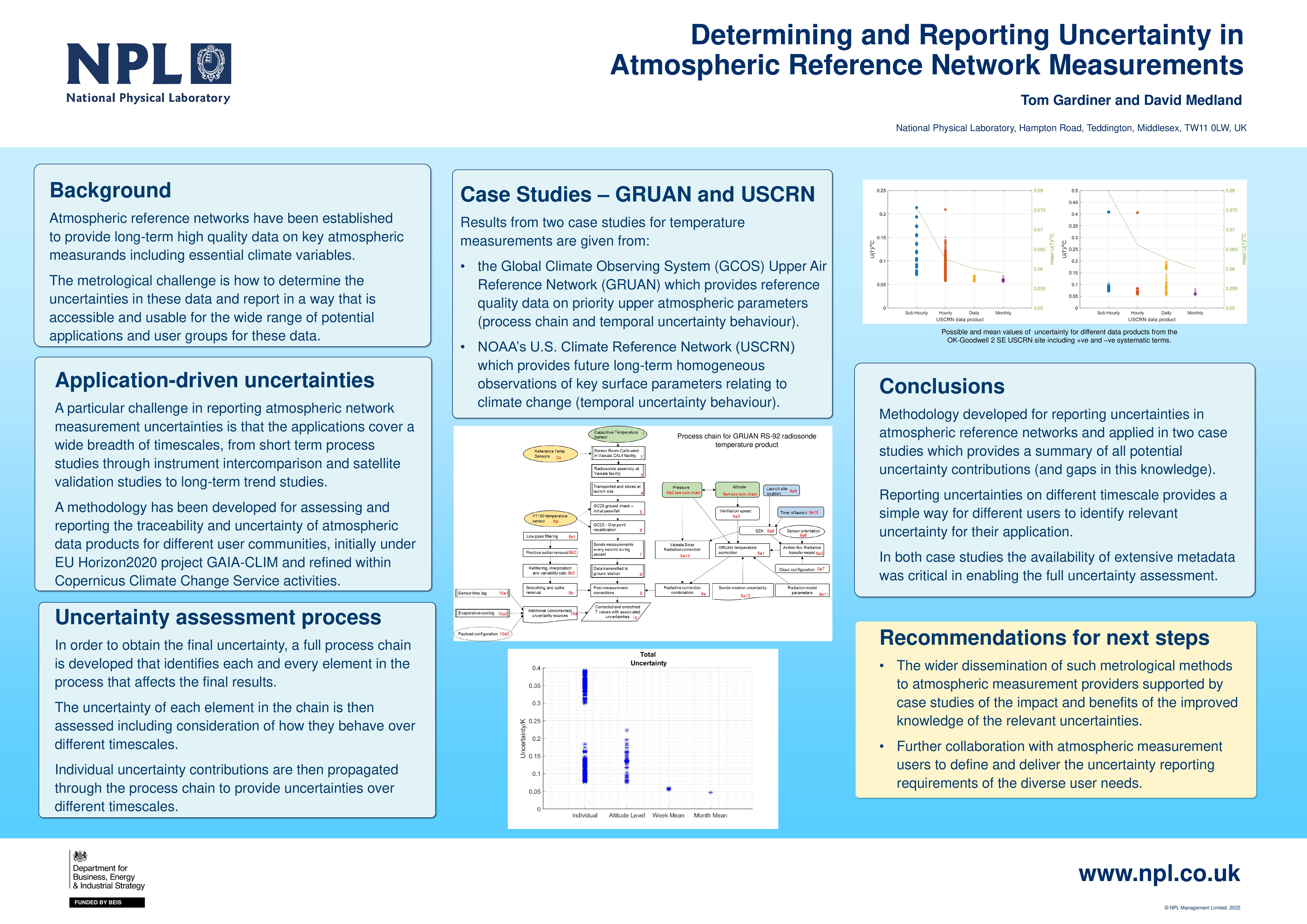↩︎ Back
Determining and Reporting Uncertainty in Atmospheric Reference Network Measurements
by Mr. Tom Gardiner, Mr. David Medland, Dr. Fabio Madonna
ABSTRACT
A number of atmospheric reference networks have been established to provide long-term high quality data on key atmospheric measurands including essential climate variables. A significant metrological challenge is how to determine the uncertainties in these data and report in a way that is accessible and usable to the wide range of potential applications and user groups that could make use of these data. Measurement uncertainty represents the best estimate of the range of values within which the true answer lies, given the current state of knowledge. An important consideration here is the nature of the ‘answer’ that is being targeted as this will have a direct impact on the relevant uncertainty. Therefore, a particular challenge in reporting atmospheric network measurement uncertainties is the range of potential applications for the data covering a breadth of timescales, from short term process studies through instrument intercomparison and satellite validation studies to determination of long-term atmospheric trends. Key to understanding and expressing the robust uncertainty analysis of any atmospheric data product is knowledge of the steps taken to produce the dataset. In order to obtain the final uncertainty, uncertainties due to each and every element in the process that affect the final result must be combined – i.e. they must be propagated through this process including consideration of how they behave over different timescales. An example methodology for assessing the traceability and uncertainty of upper atmospheric data products was initially developed as part of a European Horizon2020 project – GAIA-CLIM. This work was closely linked to similar activities undertaken for Earth Observation products in the Fiduceo project. Two reference network case studies will be highlighted. One on radiosonde temperature measurements in the Global Climate Observing System (GCOS) Upper Air Reference Network (GRUAN) which has been established to provide reference quality data on priority upper atmospheric parameters. The other is on near surface temperature measurements in NOAA’s U.S. Climate Reference Network (USCRN), a network of ~140 stations deployed across the continental U.S. and Alaska. The primary goal of the USCRN implementation is to provide future long-term homogeneous observations of key surface parameters that can be used for current climate applications while also being coupled to past long-term observations for the detection and attribution of climate change. The next steps will be the wider dissemination of such metrological methods developed in collaboration with the atmospheric measurement providers and meeting the uncertainty reporting requirements of the diverse user needs.
VIDEO
POSTER
